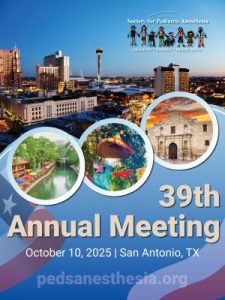{“questions”:{“la38u”:{“id”:”la38u”,”mediaType”:”image”,”answerType”:”text”,”imageCredit”:””,”image”:””,”imageId”:””,”video”:””,”imagePlaceholder”:””,”imagePlaceholderId”:””,”title”:”A 3-year-old child arrives to the ER with a new cough, drooling, and excessive irritability. Per the guardians, the patient was in her usual state of health until about 2 hours ago. Plain film radiograph reveals a 20 mm round object in the esophageal location. Ingestion of which of the following objects requires emergent endoscopy and removal? “,”desc”:””,”hint”:””,”answers”:{“fwppr”:{“id”:”fwppr”,”image”:””,”imageId”:””,”title”:”A.\tCoin”},”2cdq3″:{“id”:”2cdq3″,”image”:””,”imageId”:””,”title”:”B.\tButton battery”,”isCorrect”:”1″},”khdw0″:{“id”:”khdw0″,”image”:””,”imageId”:””,”title”:”C.\tOne magnet”},”gk09u”:{“id”:”gk09u”,”image”:””,”imageId”:””,”title”:”D.\tFidget spinner”}}}},”results”:{“mdtzq”:{“id”:”mdtzq”,”title”:””,”image”:””,”imageId”:””,”min”:”0″,”max”:”1″,”desc”:””,”redirect_url”:”https:\/\/pedsanesthesia.org\/wp-content\/uploads\/2025\/09\/Week-262-Esophageal-Foreign-Body.docx.pdf”}}}
Question of the Week #261
{“questions”:{“jiwoh”:{“id”:”jiwoh”,”mediaType”:”image”,”answerType”:”text”,”imageCredit”:””,”image”:””,”imageId”:””,”video”:””,”imagePlaceholder”:””,”imagePlaceholderId”:””,”title”:”You are called emergently to the recovery room to evaluate a 4-year-old boy who was recently extubated following a tonsillectomy and adenoidectomy (T&A) for severe obstructive sleep apnea (OSA). On examination, he has high-pitched inspiratory stridor and paradoxical chest movement. His vital signs are: SpO2 88% and HR 110. After administering 100% oxygen via face mask, which of the following is the MOST appropriate next step in managing this patient?”,”desc”:””,”hint”:””,”answers”:{“m751z”:{“id”:”m751z”,”image”:””,”imageId”:””,”title”:”A.\tDirect laryngoscopy and endotracheal intubation.”},”wmzb4″:{“id”:”wmzb4″,”image”:””,”imageId”:””,”title”:”B.\tAdministration of propofol 1 mg\/kg IV.”},”4ueb7″:{“id”:”4ueb7″,”image”:””,”imageId”:””,”title”:”C.\tAdministration of succinylcholine 1 mg\/kg IV.”},”fescl”:{“id”:”fescl”,”image”:””,”imageId”:””,”title”:”D.\tJaw thrust and continuous positive airway pressure (CPAP).”,”isCorrect”:”1″}}}},”results”:{“e3jih”:{“id”:”e3jih”,”title”:””,”image”:””,”imageId”:””,”min”:”0″,”max”:”1″,”desc”:””,”redirect_url”:”https:\/\/pedsanesthesia.org\/wp-content\/uploads\/2025\/08\/Week-261-Adenotonsillectomy-PACU-Complications.docx.pdf”}}}
Question of the Week #260
{“questions”:{“e2i14”:{“id”:”e2i14″,”mediaType”:”image”,”answerType”:”text”,”imageCredit”:””,”image”:””,”imageId”:””,”video”:””,”imagePlaceholder”:””,”imagePlaceholderId”:””,”title”:”A 7-year-old with progressive Juvenile Dermatomyositis undergoing general anesthesia is MOST at risk for which of the following complications due to her myopathy? “,”desc”:””,”hint”:””,”answers”:{“8riom”:{“id”:”8riom”,”image”:””,”imageId”:””,”title”:”A.\tMalignant hyperthermia”},”2714p”:{“id”:”2714p”,”image”:””,”imageId”:””,”title”:”B.\tPulmonary aspiration”,”isCorrect”:”1″},”xh6gs”:{“id”:”xh6gs”,”image”:””,”imageId”:””,”title”:”C.\tResistance to non-depolarizing neuromuscular blockers”},”sebuh”:{“id”:”sebuh”,”image”:””,”imageId”:””,”title”:”D.\tPropofol infusion syndrome”}}}},”results”:{“9zwni”:{“id”:”9zwni”,”title”:””,”image”:””,”imageId”:””,”min”:”0″,”max”:”1″,”desc”:””,”redirect_url”:”https:\/\/pedsanesthesia.org\/wp-content\/uploads\/2025\/08\/Week-260-Acquired-Myopathies.pdf”}}}
Question of the Week #259
{“questions”:{“3z3d9”:{“id”:”3z3d9″,”mediaType”:”image”,”answerType”:”text”,”imageCredit”:””,”image”:””,”imageId”:””,”video”:””,”imagePlaceholder”:””,”imagePlaceholderId”:””,”title”:”A 7-year-old boy presents for an umbilical hernia repair. Past medical history includes epilepsy and a recent fungal infection for which he completed a course of ketoconazole. His parents request premedication to reduce separation anxiety. Oral midazolam is selected. Concomitant administration of which of the following will result in increased<\/em> midazolam metabolism?”,”desc”:””,”hint”:””,”answers”:{“77wzl”:{“id”:”77wzl”,”image”:””,”imageId”:””,”title”:”A.\tDiltiazem”},”hjyvv”:{“id”:”hjyvv”,”image”:””,”imageId”:””,”title”:”B.\tPhenytoin”,”isCorrect”:”1″},”wzg1z”:{“id”:”wzg1z”,”image”:””,”imageId”:””,”title”:”C.\tKetoconazole”},”71nd7″:{“id”:”71nd7″,”image”:””,”imageId”:””,”title”:”D.\tErythromycin”}}}},”results”:{“2afv1”:{“id”:”2afv1″,”title”:””,”image”:””,”imageId”:””,”min”:”0″,”max”:”1″,”desc”:””,”redirect_url”:”https:\/\/pedsanesthesia.org\/wp-content\/uploads\/2025\/08\/Week-259-Midazolam-CORRECTED.pdf”}}}
Question of the Week #258
{“questions”:{“se8rr”:{“id”:”se8rr”,”mediaType”:”image”,”answerType”:”text”,”imageCredit”:””,”image”:”https:\/\/pedsanesthesia.org\/wp-content\/uploads\/2025\/08\/Picture1.jpg-SPA-QOW-258.jpg”,”imageId”:”10683″,”video”:””,”imagePlaceholder”:””,”imagePlaceholderId”:””,”title”:”A 6-year-old, 20 kg female with a past medical history of asthma presents to the emergency department with complaints of chest pain, dizziness, and one episode of witnessed syncope while playing soccer. There is a strong palpable pulse with a heart rate of 140 bpm. Blood pressure is 65\/35 mmHg, and oxygen saturation is 93% on room air. An EKG is obtained and shows the rhythm below. Which of the following interventions is the MOST appropriate next course of action?”,”desc”:””,”hint”:””,”answers”:{“2ule0”:{“id”:”2ule0″,”image”:””,”imageId”:””,”title”:”A.\tPerform a cardioversion”,”isCorrect”:”1″},”ohn5j”:{“id”:”ohn5j”,”image”:””,”imageId”:””,”title”:”B.\tAdminister amiodarone 5 mg\/kg”},”46gsy”:{“id”:”46gsy”,”image”:””,”imageId”:””,”title”:”C.\tAdminister adenosine 0.1 mg\/kg”},”4c91p”:{“id”:”4c91p”,”image”:””,”imageId”:””,”title”:”D.\tPerform vagal maneuvers”}}}},”results”:{“retuj”:{“id”:”retuj”,”title”:””,”image”:””,”imageId”:””,”min”:”0″,”max”:”1″,”desc”:””,”redirect_url”:”https:\/\/pedsanesthesia.org\/wp-content\/uploads\/2025\/08\/Week-258-Ventricular-Tachycardia_Corrected.pdf”}}}
- « Previous Page
- 1
- 2
- 3
- 4
- …
- 46
- Next Page »
